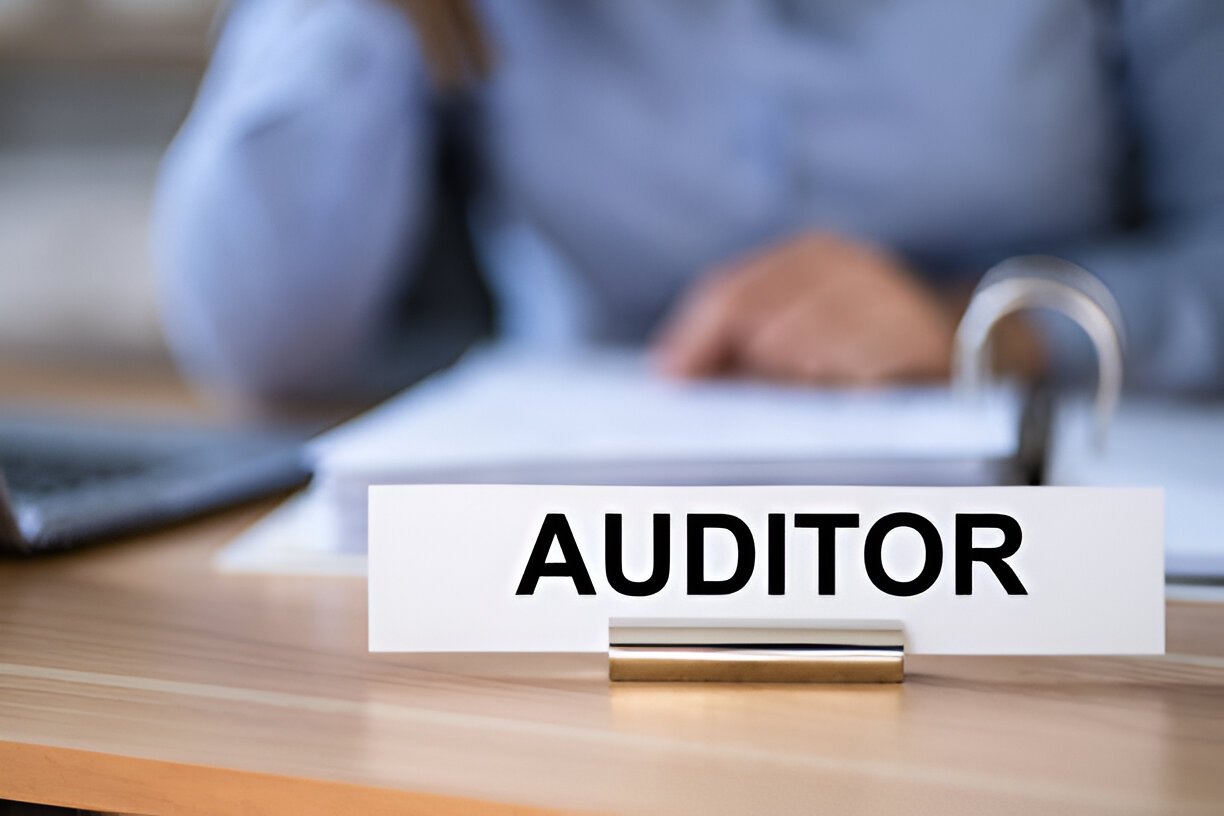As someone deeply immersed in the finance and accounting fields, I often find myself explaining the critical role of registered auditors to clients, colleagues, and even friends. The term “auditor” might conjure images of number-crunching professionals buried in stacks of financial statements, but their role extends far beyond that. Registered auditors are the gatekeepers of financial integrity, ensuring that businesses, nonprofits, and government entities adhere to accounting standards and regulatory requirements. In this article, I will delve into the multifaceted role of registered auditors, their importance in the US economy, and how they contribute to maintaining trust in financial systems.
Table of Contents
What Is a Registered Auditor?
A registered auditor is a certified professional authorized to conduct audits of financial statements. In the United States, auditors typically hold certifications such as Certified Public Accountant (CPA) or Certified Internal Auditor (CIA). These credentials are not just titles; they represent rigorous training, ethical standards, and a commitment to upholding the public interest.
Registered auditors operate in various sectors, including public accounting firms, corporate internal audit departments, and government agencies. Their primary responsibility is to examine financial records, assess compliance with accounting standards such as Generally Accepted Accounting Principles (GAAP), and provide an independent opinion on the accuracy and fairness of financial statements.
The Importance of Auditing in the US Economy
The US economy thrives on transparency and trust. Investors, creditors, and regulators rely on accurate financial information to make informed decisions. Without auditors, the risk of financial misstatements, fraud, and mismanagement would skyrocket, leading to economic instability.
Consider the Enron scandal of the early 2000s. The collapse of Enron, once a Fortune 500 company, was largely due to fraudulent accounting practices that went undetected for years. This scandal underscored the critical need for robust auditing practices and led to the passage of the Sarbanes-Oxley Act (SOX) in 2002. SOX imposed stricter regulations on auditors and corporate governance, emphasizing the importance of their role in safeguarding financial integrity.
The Audit Process: A Step-by-Step Overview
To understand the role of registered auditors, it’s essential to break down the audit process. While the specifics may vary depending on the organization and industry, the general steps are as follows:
1. Planning and Risk Assessment
The audit begins with planning. Auditors gather information about the client’s business, industry, and internal controls. They identify areas of potential risk, such as revenue recognition, inventory valuation, or compliance with tax laws.
For example, if I were auditing a manufacturing company, I would focus on inventory management and cost accounting. I would assess the risk of inventory obsolescence or errors in cost allocation.
2. Internal Control Evaluation
Auditors evaluate the effectiveness of the client’s internal controls. These are the policies and procedures designed to prevent errors and fraud. Weak internal controls increase the risk of material misstatements in financial statements.
Let’s say I discover that a company lacks segregation of duties in its accounts payable department. This means the same employee can approve invoices and process payments, creating a risk of fraudulent disbursements. I would flag this as a significant control deficiency.
3. Substantive Testing
This is the heart of the audit process. Auditors perform detailed testing of financial transactions and balances to verify their accuracy. Substantive testing includes procedures such as:
- Analytical Procedures: Comparing financial data to industry benchmarks or prior periods to identify anomalies.
- Tests of Details: Examining individual transactions, such as sales invoices or purchase orders, to ensure they are recorded correctly.
For instance, if I were testing revenue, I might select a sample of sales transactions and trace them from the invoice to the general ledger. I would also confirm receivable balances with customers to ensure they are valid.
4. Reporting
After completing the audit, the auditor issues an opinion on the financial statements. The opinion can be:
- Unqualified: The financial statements are presented fairly in all material respects.
- Qualified: There are material misstatements, but they are not pervasive.
- Adverse: The financial statements are materially misstated.
- Disclaimer: The auditor is unable to obtain sufficient evidence to form an opinion.
An unqualified opinion is the gold standard, indicating that the financial statements are free from material misstatements.
The Mathematical Side of Auditing
Auditing isn’t just about qualitative assessments; it also involves quantitative analysis. Auditors use statistical sampling and mathematical models to evaluate financial data. Let’s explore some common techniques.
Statistical Sampling
Auditors often use statistical sampling to test a subset of transactions rather than examining the entire population. This approach is efficient and cost-effective.
The sample size can be determined using the following formula:
n = \frac{{Z^2 \times p \times (1-p)}}{{e^2}}Where:
- n = sample size
- Z = Z-value (e.g., 1.96 for a 95% confidence level)
- p = estimated proportion of the population
- e = margin of error
For example, if I want to estimate the proportion of erroneous invoices with a 95% confidence level and a 5% margin of error, and I assume that 10% of invoices are erroneous, the sample size would be:
n = \frac{{1.96^2 \times 0.10 \times (1-0.10)}}{{0.05^2}} = 138This means I need to examine 138 invoices to draw reliable conclusions.
Regression Analysis
Auditors use regression analysis to identify relationships between variables. For instance, I might analyze the relationship between sales revenue and advertising expenses to determine if increased spending on ads leads to higher sales.
The simple linear regression equation is:
Y = a + bX + \epsilonWhere:
- Y = dependent variable (e.g., sales revenue)
- X = independent variable (e.g., advertising expenses)
- a = intercept
- b = slope
- \epsilon = error term
If the regression analysis shows a strong positive relationship, it supports the hypothesis that advertising drives sales.
The Ethical Dimension of Auditing
Ethics is the cornerstone of auditing. Registered auditors are bound by professional codes of conduct, such as the AICPA Code of Professional Conduct. These codes emphasize principles like integrity, objectivity, and independence.
Independence is particularly crucial. Auditors must remain impartial and free from conflicts of interest. For example, I cannot audit a company if I own shares in it or have a close relative working there.
Ethical dilemmas often arise in auditing. Suppose I discover that a client has intentionally overstated revenue to meet earnings targets. Reporting this could damage the client’s reputation and lead to legal consequences. However, failing to report it would violate my ethical obligations. In such situations, I must prioritize the public interest over the client’s interests.
The Impact of Technology on Auditing
Technology is transforming the auditing profession. Tools like data analytics, artificial intelligence (AI), and blockchain are enhancing the efficiency and accuracy of audits.
Data Analytics
Auditors now use data analytics to analyze large datasets and identify patterns or anomalies. For example, I might use software to detect duplicate payments or unusual fluctuations in expenses.
Artificial Intelligence
AI-powered tools can automate routine tasks, such as data entry and reconciliation. This allows auditors to focus on higher-value activities, such as risk assessment and strategic advisory.
Blockchain
Blockchain technology offers a tamper-proof ledger for recording transactions. This could revolutionize auditing by providing real-time, verifiable records. For instance, I could verify a company’s revenue transactions directly from the blockchain, reducing the need for manual testing.
The Role of Auditors in Fraud Detection
While auditors are not primarily responsible for detecting fraud, they play a crucial role in identifying red flags. The Association of Certified Fraud Examiners (ACFE) estimates that organizations lose 5% of their annual revenue to fraud.
Common fraud schemes include:
- Asset Misappropriation: Employees stealing cash or inventory.
- Financial Statement Fraud: Management manipulating financial records to inflate profits.
- Corruption: Bribery, kickbacks, or conflicts of interest.
Auditors use techniques like data mining and forensic accounting to uncover fraud. For example, I might analyze employee expense reports to identify suspicious patterns, such as repeated claims for the same expense.
The Future of Auditing
The auditing profession is evolving in response to changing business environments and technological advancements. Key trends include:
- Increased Focus on Sustainability Audits: As environmental, social, and governance (ESG) issues gain prominence, auditors are being called upon to verify sustainability reports.
- Greater Use of Predictive Analytics: Auditors are leveraging predictive models to anticipate risks and provide proactive recommendations.
- Enhanced Collaboration with Regulators: Auditors are working more closely with regulators to ensure compliance with evolving standards.
Conclusion
Registered auditors are indispensable to the financial ecosystem. They provide assurance, detect fraud, and uphold ethical standards, fostering trust and transparency in the economy. As the profession continues to evolve, auditors must adapt to new challenges and embrace innovative tools to remain effective.





